Korean beauty – often called K-beauty – has taken the skincare world by storm with innovative ingredients and a focus on healthy, glowing skin. Dropshipping these coveted products is an accessible way to ride the K-beauty wave without holding inventory. In this in-depth guide, we’ll explore what makes Korean beauty dropshipping so attractive, highlight 15+ top product categories to sell, reveal the 10 best suppliers, and provide tips on sourcing profitably. Whether you’re new to e-commerce or an experienced seller, this guide will help you tap into the booming K-beauty market with confidence and real-world insights.
What is Korean Beauty Dropshipping?
Korean beauty dropshipping refers to selling South Korean skincare and cosmetic products through an online store, using a dropshipping model. In dropshipping, you don’t need to buy bulk stock or manage a warehouse – instead, you partner with suppliers who ship products directly to your customers when you make a sale. This model minimizes upfront costs and risk, making it beginner-friendly.
K-beauty itself is a niche within the beauty industry centered on skincare, makeup, and haircare from South Korea. These products are renowned for their cutting-edge formulations and unique ingredients (think snail mucin, bee propolis, and centella asiatica) that promote natural, radiant skin. Unlike some Western brands that rely on heavy perfumes or harsh actives, Korean beauty emphasizes gentle, skin-first formulas and multi-step routines for long-term results. The famous Korean “10-step skincare routine” – cleansing oils, foaming cleansers, toners, essences, serums, sheet masks, moisturizers, sunscreens, etc. – exemplifies this layered approach to self-care.
Global demand for K-beauty has skyrocketed over the past decade. Beauty enthusiasts worldwide have developed a loyal following for Korean routines and products that deliver results. In fact, the global K-beauty market is projected to soar from $113 billion in 2025 to over $212 billion by 2032, nearly doubling in size. The United States is a key growth market, as American consumers embrace Korean skincare rituals and natural ingredients shared through social media and influencers. This strong, enduring trend means K-beauty is far from a fad – it’s reshaping the beauty industry for the long term.
For entrepreneurs, Korean beauty dropshipping offers the best of both worlds. You can start an online store quickly without investing in inventory, and instantly offer in-demand products that millions of people are already searching for. You get to piggyback on Korea’s constant stream of innovation – from new sunscreen formulations that leave no white cast to serums with novel fermented ingredients – and bring those “holy grail” items to customers who might not have local access. Meanwhile, suppliers and tools exist to make sourcing and fulfillment easier than ever (we’ll cover the top 10 suppliers soon). In short, K-beauty dropshipping lets you run a lean business while selling trendy, high-quality products that beauty lovers adore.
Tip: Even if you’re not a skincare expert, you can succeed in this niche. The key is understanding customer needs (hydration, anti-aging, acne care, etc.) and offering authentic solutions that K-beauty is known for. Focus on educating customers about the benefits of each product – K-beauty fans appreciate sellers who can guide them through routines and ingredients.
Now, let’s dive into the specific products you can offer. In the next section, we’ll highlight 15+ of the best Korean beauty product categories to dropship, along with why they’re popular and how they meet customer needs.
15+ Best Korean Beauty Dropshipping Products
K-beauty encompasses a wide range of product types, from gentle cleansers to intensive treatment serums. Focusing on product categories (rather than specific brand items) is a smart strategy – it allows you to offer multiple options in each category and adapt to trends. Below are over 15 top Korean beauty product categories to consider for your dropshipping store. Each category comes with brief insights on benefits and demand to help you understand why it sells.
1.Oil Cleansers (First-Step Cleansers)

K-beauty introduced the concept of “double cleansing,” starting with oil-based cleansers to dissolve makeup and sunscreen effortlessly. Korean cleansing oils and balms are formulated to deep-clean without stripping moisture. They’re in high demand among skincare enthusiasts who want a gentle yet thorough cleanse every night. Dropshipping these is smart because nearly everyone who wears makeup or SPF can use an oil cleanser – it’s a staple item that often leads to repeat purchases.
2.Foam & Gel Cleansers
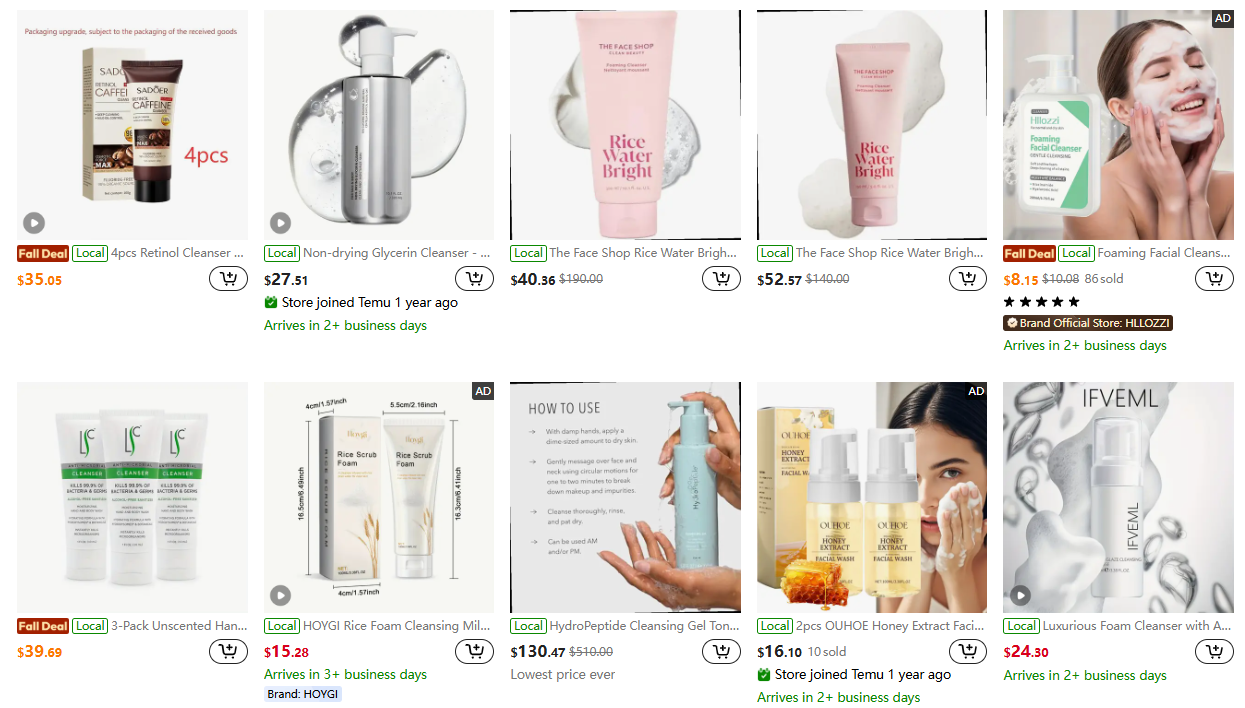
After an oil cleanser, a water-based foam or gel cleanser is used to remove any remaining impurities. Korean foaming cleansers (like low pH gel cleansers) are popular for being effective yet mild, suiting even sensitive skin. They often contain soothing botanical extracts and avoid harsh sulfates. The benefit is a clean, fresh face without dryness. There’s steady demand for these cleansers as step 2 of the routine, and many customers rebuy them monthly. Stock a mix for different skin types (e.g. tea tree or salicylic for oily skin, creamy foam for dry skin).
3.Exfoliators (Scrubs & Peeling Gels)
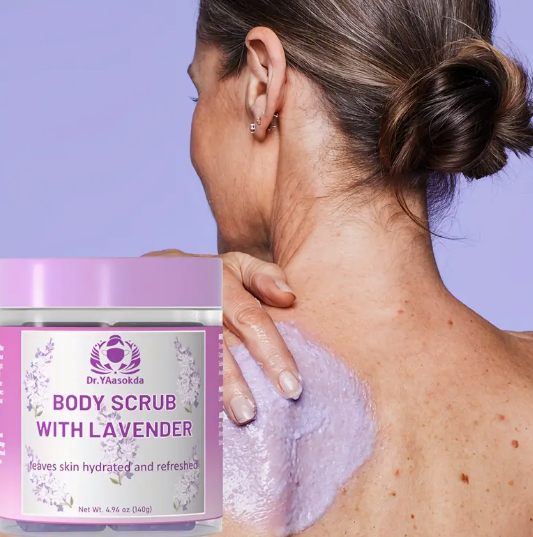
Korean exfoliators help achieve that smooth, “glass skin” glow by removing dead skin gently. Unlike some Western scrubs with rough particles, K-beauty offers innovative options like peeling gels (which ball up dead skin softly) and BHA liquids that unclog pores without irritation. Products such as mild sugar scrubs, peeling pads, or toners with lactic acid are all hits. The demand comes from those fighting dullness or blackheads who want results minus the redness. Dropship these treatments to cater to customers seeking a refined complexion – especially popular with teens (for blackheads) and adults (for anti-aging).
4.Toners
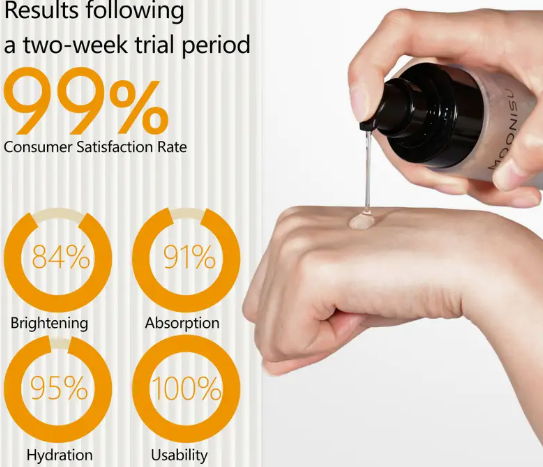
Far from the stinging astringents of the past, Korean toners are all about hydration and pH balance. These lightweight liquids prep the skin to better absorb following products. They often include ingredients like green tea, rice water, or hyaluronic acid to soothe and plump the skin after cleansing. Many K-beauty fans consider toner an essential step for dewy skin. The category sees consistent sales because toners are used daily and get used up relatively quickly. Highlight that K-beauty toners are alcohol-free and gentle – a selling point for customers who may have had bad experiences with harsh toners.
5.Essences
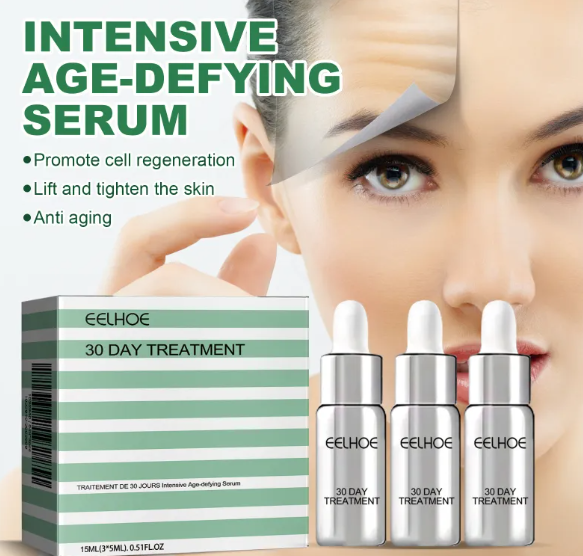
A hallmark of K-beauty, essences are lightweight, watery serums that deliver concentrated ingredients deep into the skin. They blur the line between toner and serum, often containing fermented ingredients for extra efficacy. For example, an essence might feature galactomyces ferment (for brightening) or birch sap (for calming). Essences like these introduced many consumers to the idea of layering multiple hydrators for a radiant complexion. Demand is high among skincare connoisseurs who follow multi-step routines – they’ll look for authentic Korean essences to complete their regimen. Emphasize benefits like improved absorption of other products and unique anti-aging ingredients when selling essences.
6.Serums & Ampoules
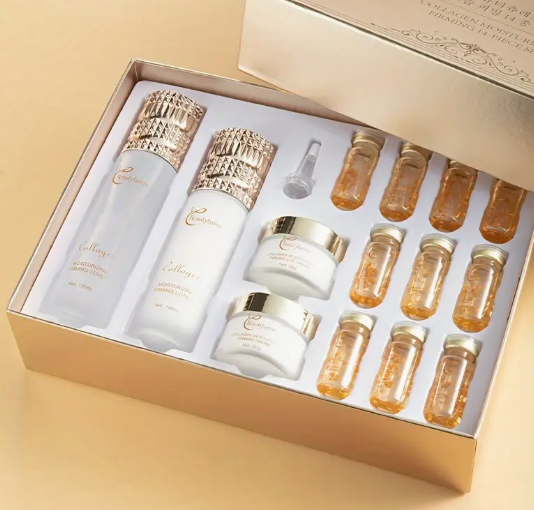
This is one of the most popular categories because it addresses specific skin concerns with powerful ingredients. Korean serums and ampoules are known for their innovative formulas – e.g. snail mucin serum to repair and hydrate, vitamin C serum to brighten, Centella asiatica (cica) for calming, and peptide ampoules for anti-aging. These treatments have a loyal following; for instance, snail mucin essence is prized for boosting collagen and healing scars. Shoppers often buy multiple serums to layer, and they appreciate K-beauty’s affordable pricing for quality. By dropshipping a range of serums/ampoules, you cater to a broad audience: from acne sufferers (who might seek propolis or tea tree serums) to mature skin customers (seeking ginseng or retinol blends). Serums are small, lightweight, and high-value – ideal for e-commerce shipping.
7.Sheet Masks

Perhaps the icon of K-beauty, sheet masks are single-use fabric masks soaked in serum. They allow users to enjoy a spa-like treatment at home in 15-20 minutes. The sheer variety (hydrating masks, brightening vitamin C masks, anti-acne tea tree masks, etc.) and Instagrammable “self-care” appeal have made sheet masks incredibly popular worldwide. In fact, sheet masks represent one of the largest product segments in K-beauty by sales volume. These are perfect for dropshipping: they’re inexpensive, light to ship, and often bought in multiples. Customers tend to add several to their cart at once. Market them as an easy add-on sale (“treat yourself with a mask!”) or create bundles (e.g. a 5-pack for a week’s skincare routine). Emphasize any unique mask ingredients like collagen, pearl, or charcoal which intrigue shoppers. With celebrity and influencer endorsements common, sheet masks practically sell themselves as a fun, effective skincare treat.
8.Wash-Off Masks & Packs

In addition to sheet masks, Korean brands offer jar masks – think clay masks, mud packs, peeling masks, and wash-off packs with ingredients like volcanic ash or rice. Clay masks that detox pores, and sleeping packs (overnight leave-on masks) that deeply moisturize, are especially popular. For example, a mugwort calming mask or a rice sleeping mask can generate buzz due to their visible results by morning. These masks cater to consumers who want a more intensive weekly treatment. They often complement daily sheet mask users. Dropshipping these allows you to tap into customers looking for targeted care (e.g. a pore-clearing mask for oily skin or a nourishing sleep pack for dry skin). Because one jar can last many uses, they’re a great value proposition. Consider carrying a balanced assortment: one or two clay masks, a hydrating overnight mask, and perhaps a trendy ingredient mask (like a pumpkin enzyme mask for gentle exfoliation).
9.Moisturizers & Creams
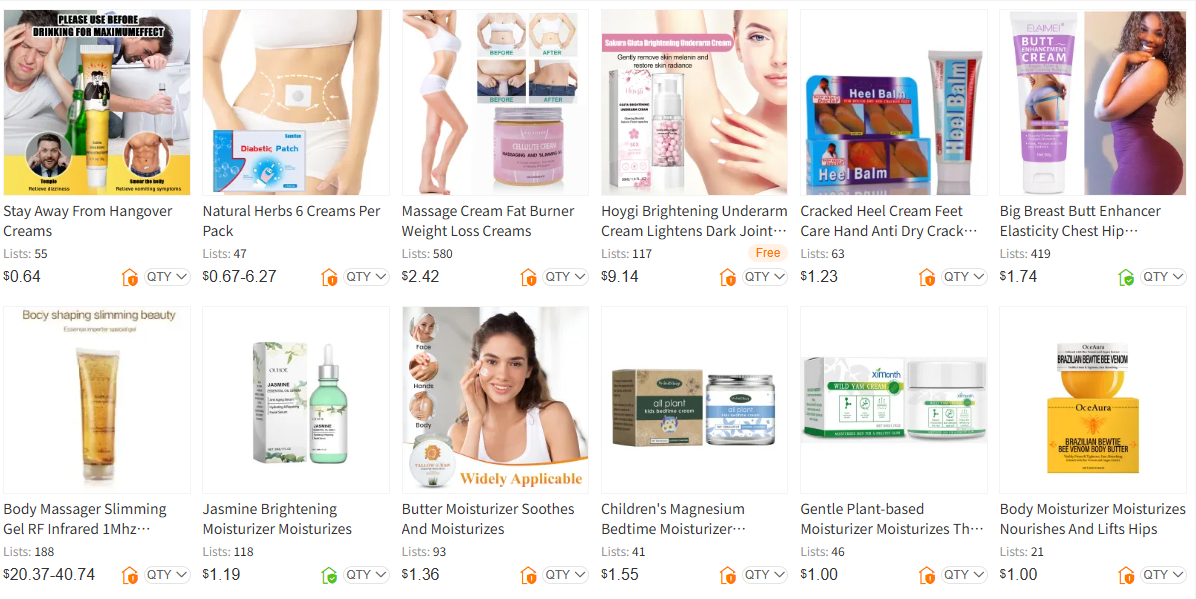
Moisturizers are core products in any skincare routine, and K-beauty brands excel in this category. Korean moisturizers tend to be formulated with natural extracts and lighter textures that still provide deep hydration. For example, gel creams with ingredients like green tea or propolis are loved by those with oily/combination skin, while rich creams with ceramides are favored by dry skin types. One standout is the emphasis on skin barrier repair – many K-moisturizers include ingredients to strengthen the skin’s protective barrier (like niacinamide or madecassoside). The demand is high and steady: everyone needs a moisturizer, and many users will repurchase their favorite every 1-2 months. Highlight how Korean moisturizers are lighter than traditional Western creams yet highly effective, often packed with botanical oils and actives that leave skin dewy but not greasy. To maximize sales, offer a range covering different needs: e.g. an oil-free gel, a mid-weight lotion, and a rich night cream.
10.Sunscreens
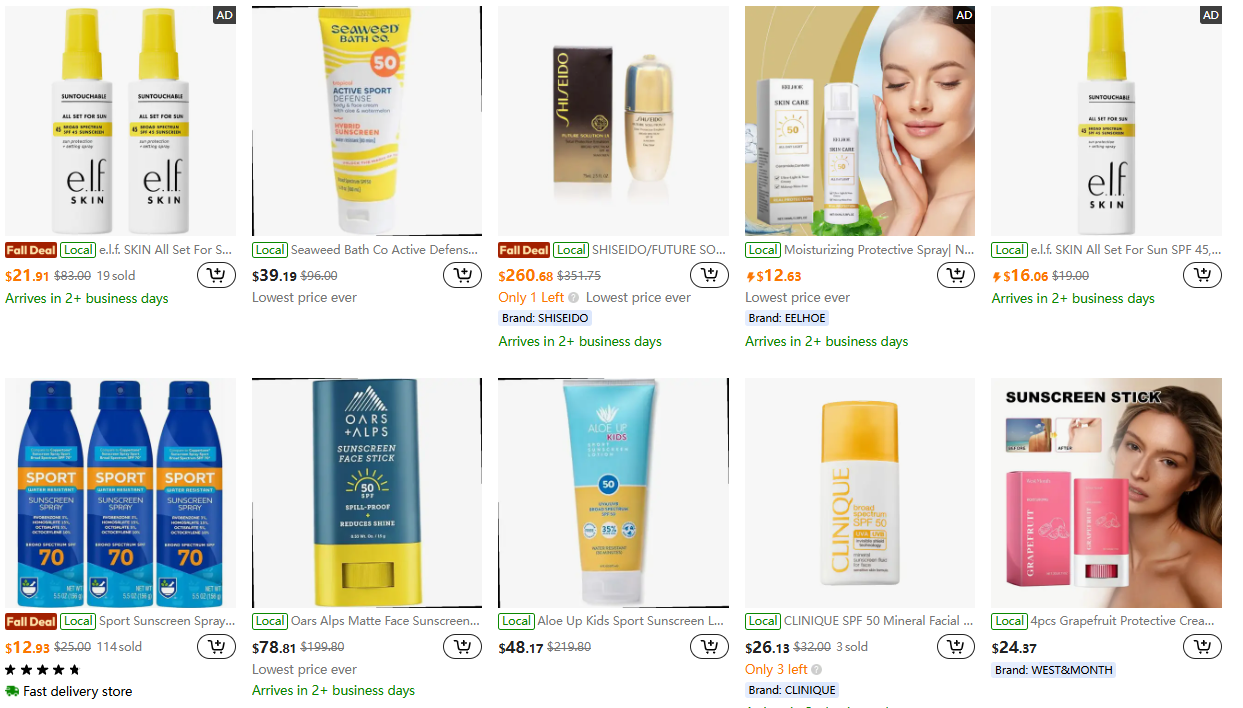
Korean sunscreens have earned a cult following globally for their advanced formulas that eliminate the common complaints about sunscreen. Forget thick, chalky sunscreen – K-beauty sunscreens are often weightless, fast-absorbing, and leave no white cast. Many double as skincare, infused with ingredients like rice ferment, niacinamide, or centella to hydrate and soothe while protecting. The result is high daily compliance: customers love using them, which drives repeat sales. With rising awareness of sun damage, demand for quality SPF is skyrocketing. Dropshipping Korean sunscreens can be very profitable, especially if you feature best-sellers known on social media (they often go viral for their cosmetically elegant finish). Just be mindful of any regulatory notes: in the U.S., some newer UV filter ingredients in Asian sunscreens aren’t FDA-approved yet, so market them as “day creams with SPF” if needed. Overall, offering a couple of top-rated Korean sunscreens (like an aqua gel and a moisturizing cream SPF) will attract a broad audience – from skincare junkies to anyone seeking better sun protection. These products often sell out during summer months, so align your marketing accordingly.
11.Eye Creams & Eye Patches
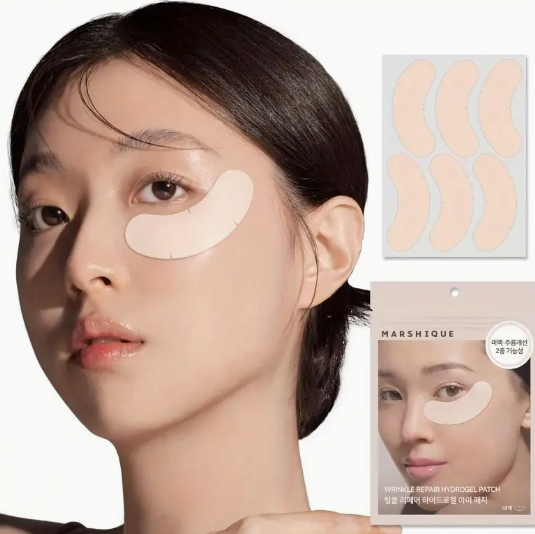
The delicate eye area gets special attention in K-beauty. Korean eye creams are known for being gentle yet packed with actives to tackle dark circles, puffiness, and fine lines (common ingredients include ginseng, snail secretion, and peptides). They cater to the sizable market of consumers concerned with anti-aging and looking more refreshed. In addition, hydrogel eye patches (those crescent-shaped gel pads you place under the eyes) have become a trendy item for self-care routines – they’re fun, photogenic, and effective at delivering a quick dose of hydration and de-puffing (often with gold, snail, or collagen in the formula). Eye care products benefit from Korea’s innovation and are in demand because many Western brands’ eye creams are very expensive; K-beauty offers more affordable yet effective alternatives. For your store, consider dropshipping at least one popular eye cream and perhaps a tub of 60-piece eye patches. They’re small, relatively cheap to ship, and often purchased by customers as an add-on to their regimen. Emphasize the unique ingredients (e.g. “snail mucin eye cream for brightening and repair”) to spark interest.
12.Lip Care (Balms & Masks)
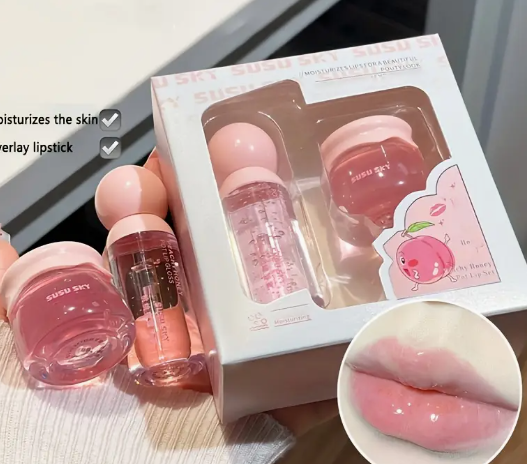
K-beauty doesn’t neglect the lips. In fact, one of the most famous Korean products internationally is a lip sleeping mask – an overnight lip balm that leaves lips pillowy soft by morning. These lip masks, often berry-scented and rich in vitamin C and moisturizers, have a devoted fanbase because they truly make a difference for dry, chapped lips. Alongside, Korean brands offer everyday lip balms and oils with natural ingredients like honey, propolis, or shea butter. The appeal is that these products both pamper and treat – customers love the idea of waking up with smoother lips. Lip care items are low-cost and easy to bundle; a customer buying a face cream might happily add a $10 lip mask to their cart. Also, with the mask-wearing habits of recent years, many people experienced drier lips, increasing interest in intensive lip treatments. Dropship lip care as a sweet spot product: it’s inexpensive, ships in a small package, and can bring in impulse buys. You can even create a “nighttime routine” bundle that includes a lip mask and a sleeping face mask as a cross-sell.
13.BB Creams and Cushion Foundations
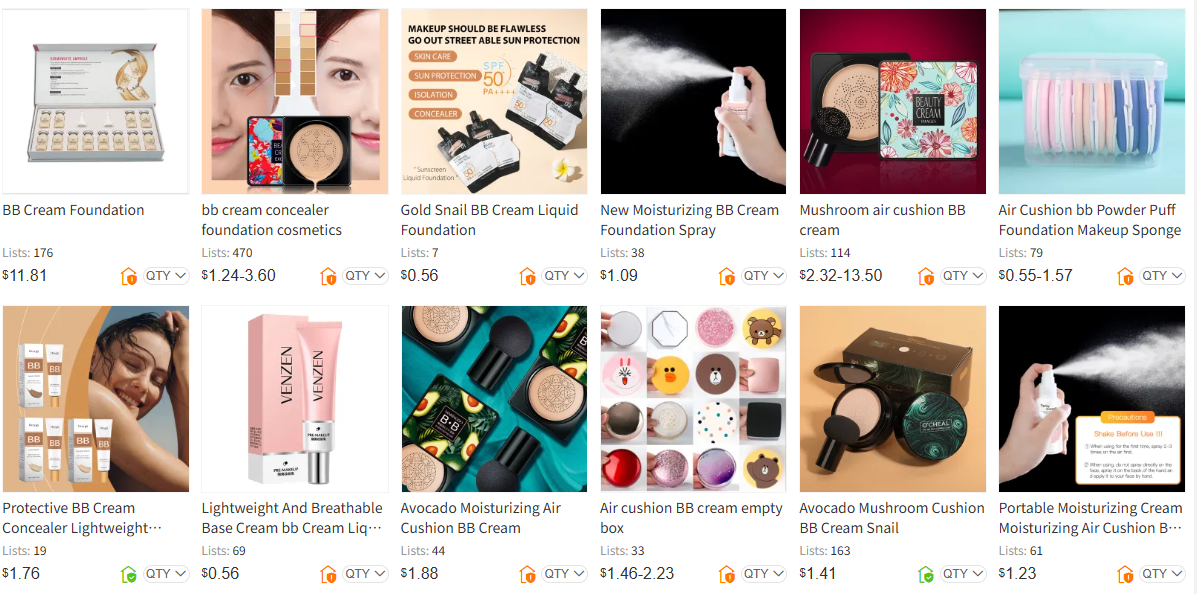
Korean beauty revolutionized makeup by blurring skincare and cosmetics. BB creams (blemish balms) were popularized by K-beauty – these are lightweight foundation creams that also hydrate, treat, and often include SPF. They give natural coverage and a dewy finish that aligns with the Korean philosophy of enhancing, not masking, your skin. Similarly, cushion compacts (liquid foundation in a sponge compact) were a K-beauty innovation now adopted by global brand. They make reapplying makeup and sunscreen on-the-go very convenient. The demand for these products is strong among those who prefer a natural look and multitasking benefits. When dropshipping K-beauty makeup, focusing on these base products is wise because they have broad appeal (many shades are forgiving due to sheer coverage, and they simplify routines). Market them as “skincare meets makeup” – e.g. a cushion compact that moisturizes and protects with SPF while providing a flawless finish. Customers in the U.S. have taken notice of K-beauty BB creams for their skin-friendly formulas, so this category can perform well especially if you stock a well-reviewed item. Ensure you describe shade options clearly and consider including a range that suits different skin tones if available.
14.Lip Tints and Tinted Cosmetics
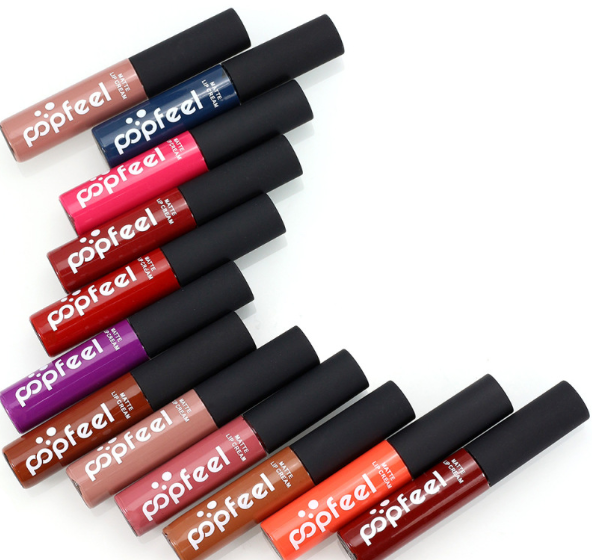
In makeup, another K-beauty favorite is the lip tint – a lightweight, long-lasting tint that gives lips a popsicle-kissed look. Brands from Korea have countless variations (water tints, oil tints, velvet tints) in adorable packaging. These are highly popular with younger consumers and K-pop fans, as the look is a signature Korean style. Aside from tints, products like cream blushes or cushion blush (which often double as lip tints too) align with the natural, youthful aesthetic of K-beauty. For a dropship store, lip tints are great: they are inexpensive, come in many shades (encouraging customers to buy more than one), and their cute packaging makes them “Instagrammable.” Demand spikes whenever a particular shade goes viral on TikTok or if a celebrity is seen wearing a certain tint. Keep an eye on trends and consider rotating in new arrivals. With K-beauty’s emphasis on playful yet easy makeup, including a selection of tints or multi-use color sticks can attract makeup enthusiasts to your shop. They’re also light and cheap to ship – a bonus for your margins.
15.Acne Pimple Patches

These tiny, transparent hydrocolloid patches were popularized in Korea and have become a global must-have for anyone who gets the occasional pimple. Pimple patches are essentially stickers one places on a zit overnight (or even under makeup during the day) to absorb gunk and heal blemishes faster. Who doesn’t love a quick fix for surprise breakouts? These patches are hugely popular among Gen Z and millennials, and for good reason – they’re effective and discreet. From a dropshipping perspective, pimple patches are a golden product: small, lightweight (cheap and fast to ship), with customers often buying multiple packs (since they’re single-use) and coming back for more. Many brands offer fun variations too – like cute star-shaped patches or extra-thin ones for daytime. Highlight that these patches can prevent picking and scarring, which appeals to anyone who struggles with acne. Also, since it’s a consumable product, satisfied customers will be repeat buyers. Benefit & demand: They address a very common concern (acne) in a novel way, and their huge popularity means you’ll likely see consistent sales if you stock reputable, well-reviewed patch brands. Be sure to note if a product has different sizes in one pack (to cover various pimple sizes) as this is a selling point.
16.Beauty Tools & Accessories
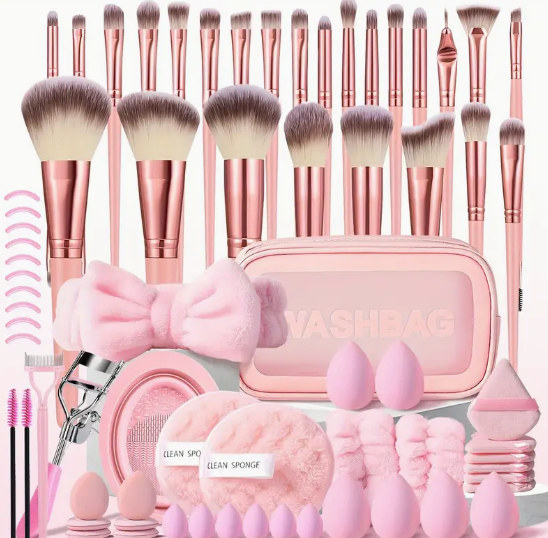
Rounding out your K-beauty catalog with some accessories can increase your average order value and make your store feel like a one-stop beauty shop. Korea is known for clever beauty tools – for example, facial massage tools like the Rose Quartz Gua Sha and jade rollers which boost circulation and help product absorption are very trendy. There are also electronic variants like an LED facial mask for light therapy at home, or an electric facial roller with microcurrent, which combine traditional skincare with tech innovation. Additionally, simpler accessories like soft headbands (to hold hair back during skincare), silicone face brushes, or special cotton pads are inexpensive items that complement product sales. The demand for tools has grown as more people replicate spa treatments at home – for instance, Gua Sha tools gained popularity via social media for their ability to sculpt the jawline naturally. Dropshipping these items is smart because tools aren’t subject to expiry or as many regulations as cosmetics, and they often have good margins. They also present upsell opportunities: for example, if someone buys a serum, you might suggest a Gua Sha tool for better application. Emphasize the self-care and longevity aspect (many tools are reusable, eco-friendly alternatives to disposable applicators). A mix of 2-3 tools in your store – say a Gua Sha, a facial roller, and a cute skincare headband – can nicely complement the consumable products and entice shoppers to add a little something extra to their cart.
These 15+ product categories capture the essence of what makes K-beauty so beloved: gentle yet effective solutions, a bit of fun and innovation (snail slime, anyone?), and an emphasis on consistent self-care. By offering a curated selection across these categories, you enable customers to build their own Korean skincare routine from your store. Many of the products are highly complementary – for example, someone buying a cleanser might also buy a moisturizer and sunscreen. Consider guiding your customers with routine bundles or educational content on how to use these items together. This not only increases sales but also positions your store as a knowledgeable K-beauty destination.
Demand Insight: Korean beauty products are experiencing sustained growth globally. Items like sheet masks and moisturizers hold the largest market share in K-beauty, thanks to their universal appeal and influence of K-pop and K-drama culture. By choosing products that cater to common skincare goals (hydration, anti-aging, acne control, sun protection), you tap into a broad audience. Keep an eye on social media trends too – a single TikTok video can send a specific serum or lip tint into viral sold-out status. Stay flexible with your product offerings so you can catch these waves.
Having covered what to sell, the next crucial step is figuring out where to source these products reliably. Let’s explore the top suppliers and platforms that specialize in Korean beauty dropshipping, so you can fulfill orders smoothly and keep customers happy.
Top 10 Dropshipping Suppliers for Korean Beauty
Sourcing authentic Korean beauty products is mission-critical – you want reliable suppliers that provide genuine items, reasonable shipping times, and good service. Below are 10 of the best dropshipping suppliers (and wholesale sources) for K-beauty products, with a focus on those that serve the U.S. market or have global reach. We’ve ranked them with CJdropshipping as #1, as requested, followed by nine other reputable options. Each entry notes what the supplier is known for and why it’s useful for your K-beauty business.
1.CJdropshipping – All-in-One Dropshipping Platform with Global Warehouses
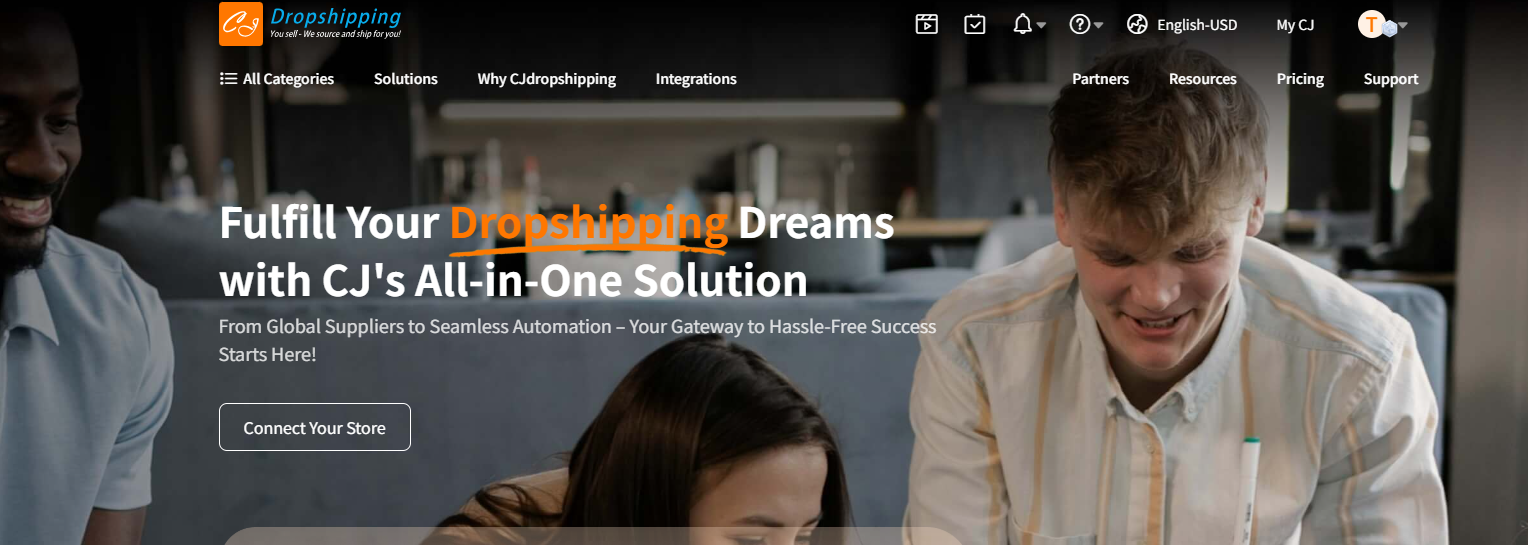
CJdropshipping (often called CJ) is a popular full-service platform that can source and fulfill products for your store. It stands out for its global warehouses (including in the U.S.) and tech integration – you can import products to your Shopify or WooCommerce store with one click, and CJ automates order syncing and fulfillment. CJ’s catalog does include K-beauty items and accessories, and you can even request them to source specific products if you don’t see what you need. This is great for flexibility. The key benefit is speed: if an item is stocked in their U.S. warehouse, it ships to American customers much faster than coming from Asia. Note: When using CJ for branded K-beauty products, verify authenticity and distribution rights. CJ is known to list many products, so double-check that any Korean brand cosmetics are genuine. Overall, CJdropshipping is an excellent starting point for beginners due to its ease of use, and it scales well as you grow, but always maintain quality control on the products you choose.
2.Q-Depot – K-Beauty Wholesale Powerhouse
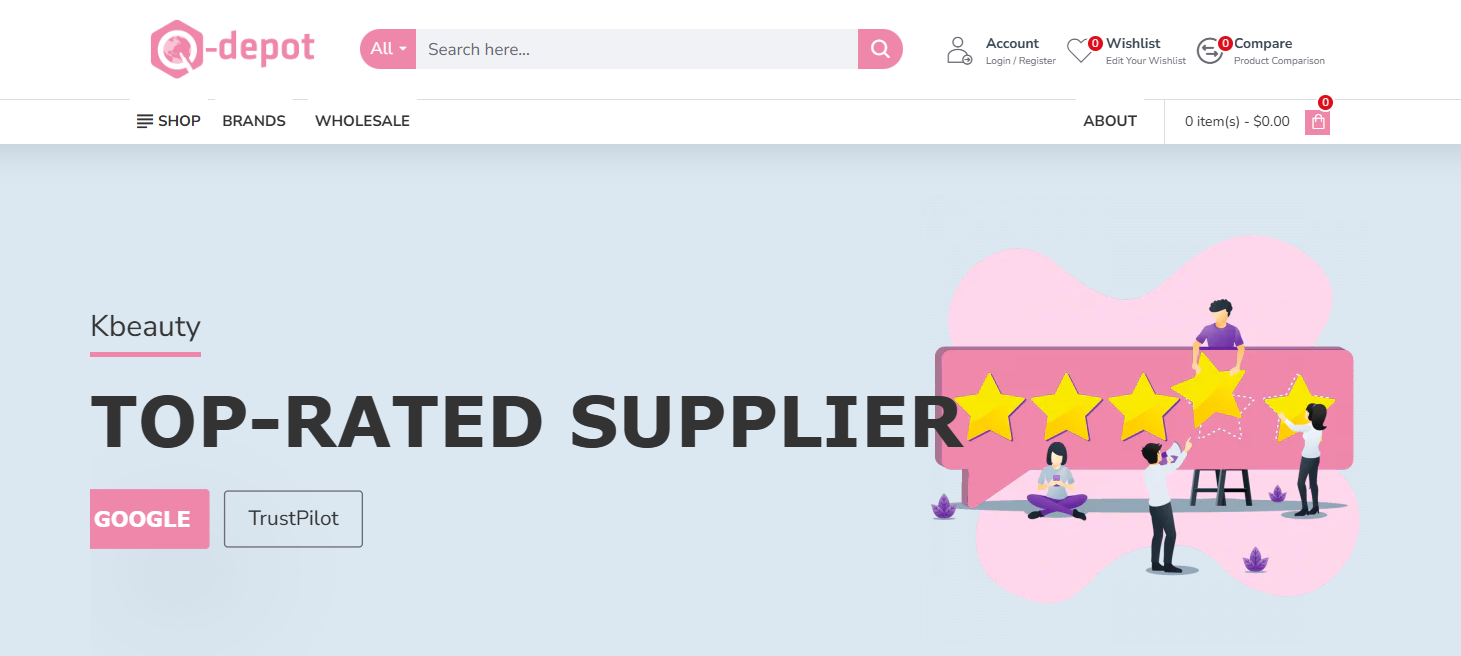
Q-Depot is a long-standing Korean cosmetics distributor that offers both wholesale and dropshipping services. They focus on authentic Korean and Japanese beauty brands, boasting a catalog of hundreds of brands – from famous names to indie labels. This depth allows you to build out a comprehensive store selection. Q-Depot emphasizes authenticity and frequently updates inventory, so you’re likely to find the latest “hot” products here. For dropshippers, they have a dedicated portal with relatively low minimum order requirements (if any). Why it’s great for U.S. sellers: They have experience exporting worldwide, including handling export documentation and various shipping methods. You’ll want to inquire about their shipping times and methods to the U.S., but many users report that Q-Depot is a trustworthy source with competitive wholesale pricing. One tip is to use Q-Depot to secure core routine items (like popular toners, essences, sunscreens) at good prices, ensuring you have those staples covered. It’s a supplier that can support you as you scale from dropshipping toward possibly stocking best-sellers.
3.StyleKorean (B2B Wholesale Program) – Trend-Focused K-Beauty Curator
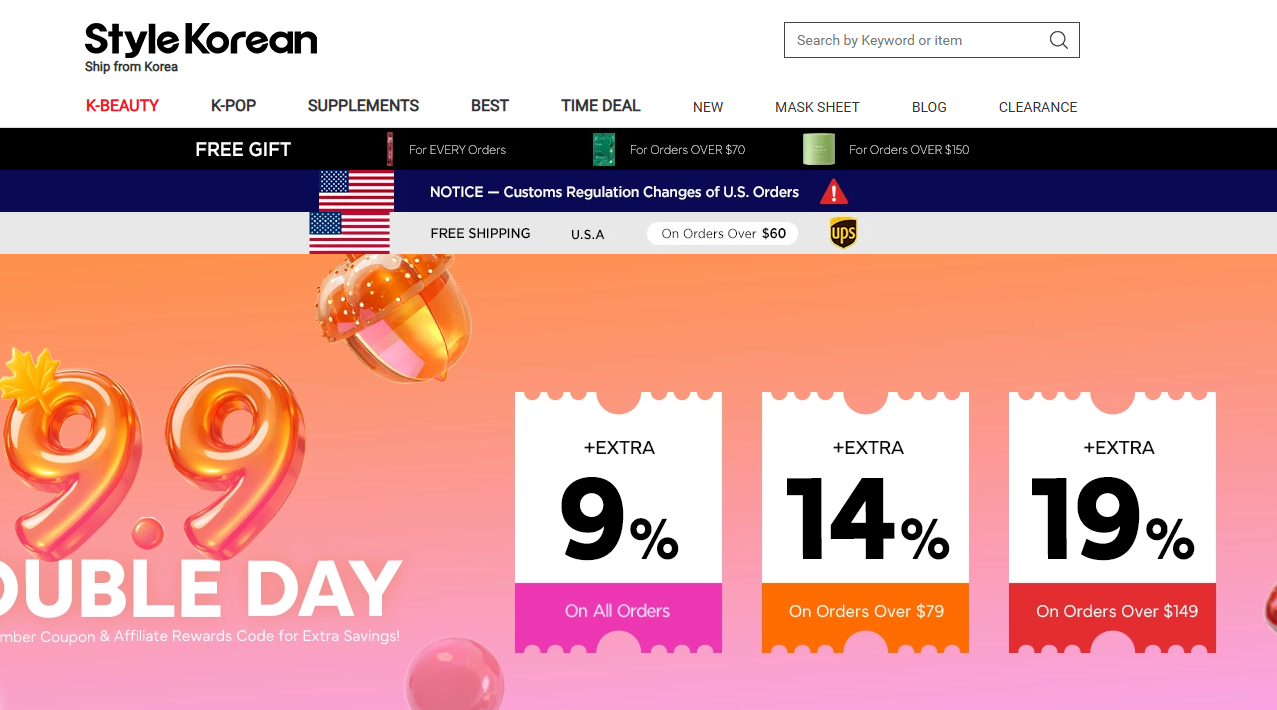
StyleKorean is a major K-beauty retailer that also has a B2B wholesale program for international resellers. They are widely known for carrying buzzworthy, TikTok-viral brands and new product launches. As a dropshipper, partnering with StyleKorean’s wholesale arm means access to in-demand products often at the forefront of trends. They have a reputation for reliable global fulfillment and careful brand curation – essentially, if a Korean skincare product is going viral, StyleKorean likely stocks it. For U.S. and global sellers, this is useful for “trend-surfing” – you can quickly source those products your customers are starting to ask for. Do note that to use their B2B service, you’ll need to apply for a wholesale account and meet any requirements they have (sometimes they ask for business details or order minimums). Also clarify any brand restrictions (a few brands might limit distribution by region) and pricing policies like MAP (minimum advertised price). Once set up, StyleKorean can be a go-to for keeping your catalog fresh and relevant. Pro tip: Because they focus on trendy items, align your marketing (like Instagram videos or TikTok demos) with these new arrivals to maximize sales.
4.BeautyNetKorea – Wholesale & Retail Bridge

BeautyNetKorea is one of the longest-running exporters of Korean cosmetics, serving both consumers and wholesale buyers. They have an extensive brand list (hundreds of brands) and ship globally. A big advantage is they allow small test orders at near-wholesale prices – meaning you can order even single units or small quantities to see how a product performs before scaling up. They also provide retail-level service (like detailed product pages) which can be handy for grabbing descriptions or images for your store. BeautyNetKorea has been around for years, so they have logistics experience: they offer various international shipping options and support, with guidance on customs if needed. U.S. dropshippers can benefit from their familiarity with overseas shipping, but always check the shipping cost and time for the methods they offer (sometimes they might offer faster EMS or DHL, etc., at higher cost or slower but free/cheap postal options). Why use them: They’re great for testing products and variety. You could, for instance, place a small order for a few different serums to see which one gains traction in your store, without committing to large stock. Once you find a hit, BeautyNetKorea can usually fulfill larger orders too. Keep an eye on their site for clearance deals or new brand additions. Just monitor lead times around peak seasons or big promotions, as any distributor can face slowdowns then.
5.KMALL24 – KITA-Backed Marketplace
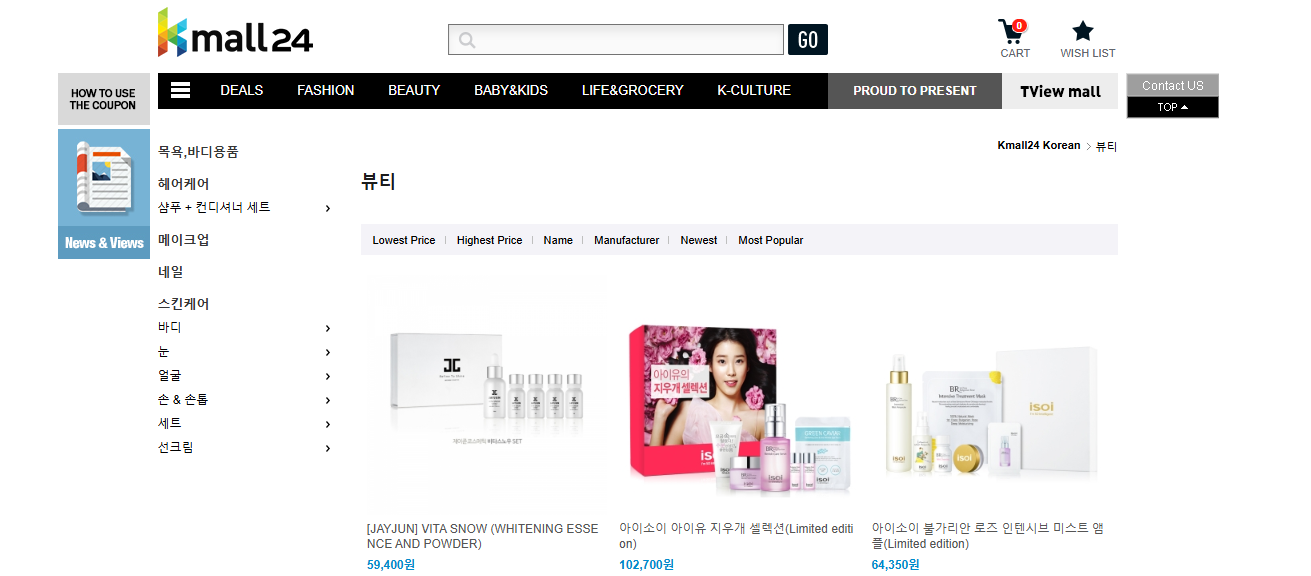
KMALL24 is an interesting option – it’s an online marketplace operated by the Korea International Trade Association (KITA) to connect overseas buyers with verified Korean vendors. Essentially, it’s a platform backed by a reputable institution, which increases trust when sourcing products. On KMALL24, you’ll find not just beauty products but also other categories (fashion, food, etc.), though beauty is a major section. For dropshippers, this can be a way to discover niche or up-and-coming K-beauty brands that aren’t yet widely available. Since it’s a marketplace, you’ll be dealing with individual vendors/sellers, so make sure to vet each seller’s ratings and policies. Key things to check: whether the vendor offers neutral packaging or blind drop shipping (so that parcels don’t arrive with their invoice or branding) – some might not automatically do this. Also confirm shipping methods, times, and costs, and how they handle issues or returns. Payment is typically secure via the platform, and dispute resolution is in place given the institutional backing. KMALL24’s strength is the breadth of selection; you might find that one cult-favorite indie toner or a unique spa tool here. It’s like a bridge to authentic Korean shops. Use it to add special finds to your store, then validate demand by perhaps buying a few units first. It’s a bit more hands-on than using a single wholesale supplier, but it can differentiate your product lineup.
6.Faire – Wholesale Marketplace (US/EU focus)

Faire is a large online wholesale marketplace popular in North America and Europe, primarily used by boutique retailers to stock their stores. In recent years, Faire’s catalog has grown to include K-beauty brands and products, often through distributors or brand owners who list there. The benefit of Faire is the retailer-friendly terms – they often allow net payment terms (buy now, pay later for inventory) and easy reordering. For a dropshipper, Faire is a bit unconventional (it’s meant for buying wholesale inventory), but you could use it in a hybrid model – for example, order small quantities of K-beauty items through Faire to hold minimal stock or to test demand. Some vendors on Faire might even agree to drop ship on your behalf if asked, but many will expect you to place an order and they ship to you (or your third-party logistics) rather than individual customers. The advantages: Faire can give access to smaller niche brands that aren’t on other lists, with low minimum order quantities in many cases. Also, if you’re U.S.-based, you might find U.S. importers of Korean products on Faire, which means faster domestic shipping. Caution: Not all vendors on Faire allow their products to be sold via dropshipping or online-only models – some might prefer brick-and-mortar retailers. Check the vendor’s terms or ask for permission. If allowed, ensure they can fulfill orders quickly. Faire is great for diversifying your sourcing and possibly getting better wholesale prices, but use it wisely to complement your main dropshipping supply chain. It’s especially useful if you plan to transition to a stock-and-ship model for your top sellers, as you can get bulk deals once you identify winners. (For instance, you spot “Beauty of Joseon” brand listings on Faire with good terms, you secure those to have a dependable supply in the U.S. without international shipping each time.)
7.UMMA – Wholesale Distributor & Portal
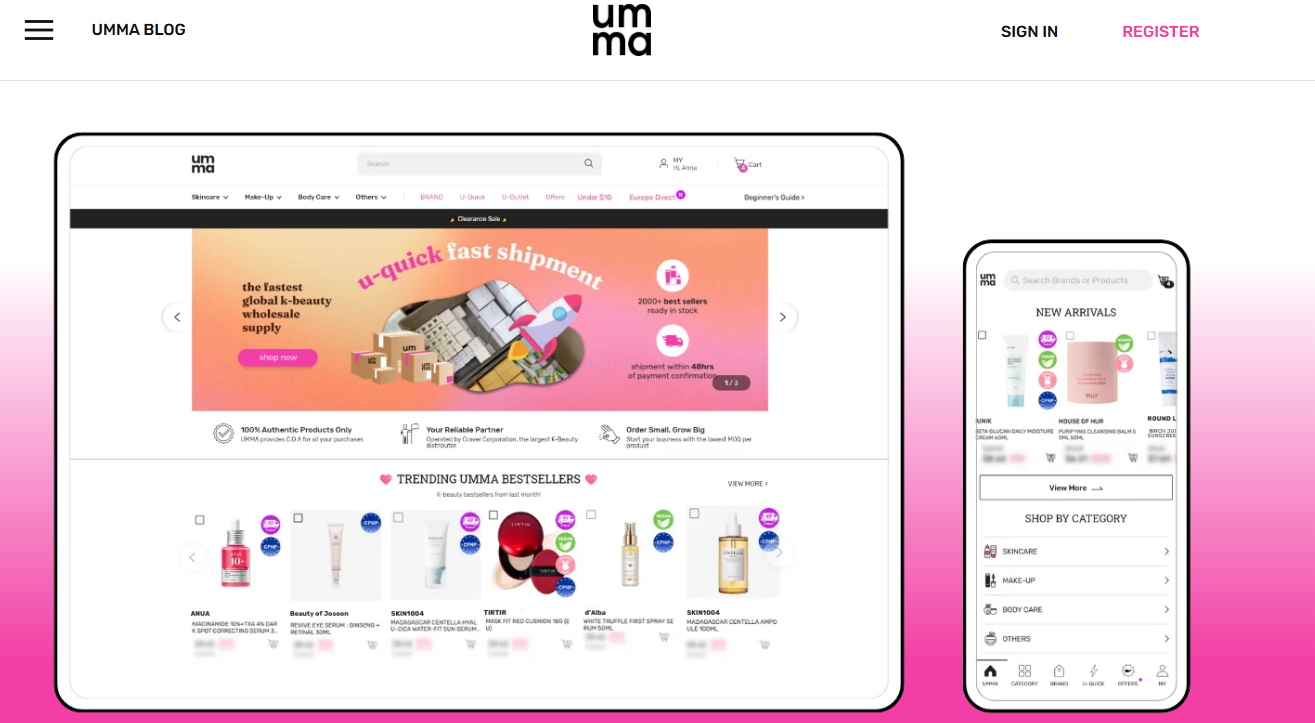
UMMA is a dedicated B2B platform focused on Korean beauty wholesale. Think of it as a one-stop portal for authentic K-beauty products, working directly with many brands. They highlight authenticity by providing Certificates of Authenticity (COA) and have a vast catalog of skincare and cosmetics. For dropshippers and resellers, UMMA can serve as a central hub to source multiple brands at true wholesale prices. They may require creating an account and possibly order minimums by brand, but the benefit is consolidation – instead of dealing with 10 different brand suppliers, you order through UMMA and they handle it. Why it’s useful: It offers wholesale pricing and bulk availability without you having to travel to Korea or speak Korean. You can potentially get better margins if you’re ordering moderate volumes. UMMA also values fast shipping; they understand overseas buyers need efficient logistics, and they aim to ensure orders are dispatched quickly, which helps your customers get their products sooner. Make sure to clarify if they offer any dropshipping service (shipping direct to your customer) or if you would receive the goods first – some wholesalers might not ship one-by-one to consumers. However, even if you have to hold some inventory, using UMMA for your core catalog can ensure consistency in supply and authenticity. Use UMMA to standardize your base catalog – for example, always having stock of those key cleansers, toners, essences, and SPFs that define a K-beauty routine. This reliability can set your store apart, as you’re less likely to run out of key items.
8.K-Beauty Connect – B2B & Private Label Opportunities

K-Beauty Connect is a platform that connects sellers to Korean manufacturers and brand suppliers, potentially even enabling you to create your own private-label K-beauty line if desired. It’s more of an advanced route, but worth noting for those with big ambitions. Initially, you can use it to import existing brands (similar to other wholesalers). Over time, if your store grows and you identify certain “hero” products or ingredients that your customers love, K-Beauty Connect could help you explore making a custom product or exclusive brand for your store. For example, you might decide to launch your own snail mucin serum once you see how popular snail products are – this platform could link you to OEM (original equipment manufacturer) labs in Korea to formulate and produce it with your label. The benefit is higher margins and brand control (long-term). In the short term, K-Beauty Connect can provide access to a wide range of wholesale products too, similar to UMMA or Q-Depot. Check their site for how they structure deals – there may be MOQs (minimum order quantities) especially for private label projects. They also assist with ensuring compliance (INCI ingredient lists, testing, labeling) when creating products, which is valuable because navigating regulations can be tricky. In summary, use K-Beauty Connect as a source of scaling up: start with reselling, and when you’re ready, leverage it to possibly launch an in-house brand once you have an audience (this could drastically boost profits and store value long-term). It’s an exciting option for advanced e-commerce operators looking beyond just dropshipping toward building a brand empire.
9.YESBEE – K-Brand Wholesale Connector
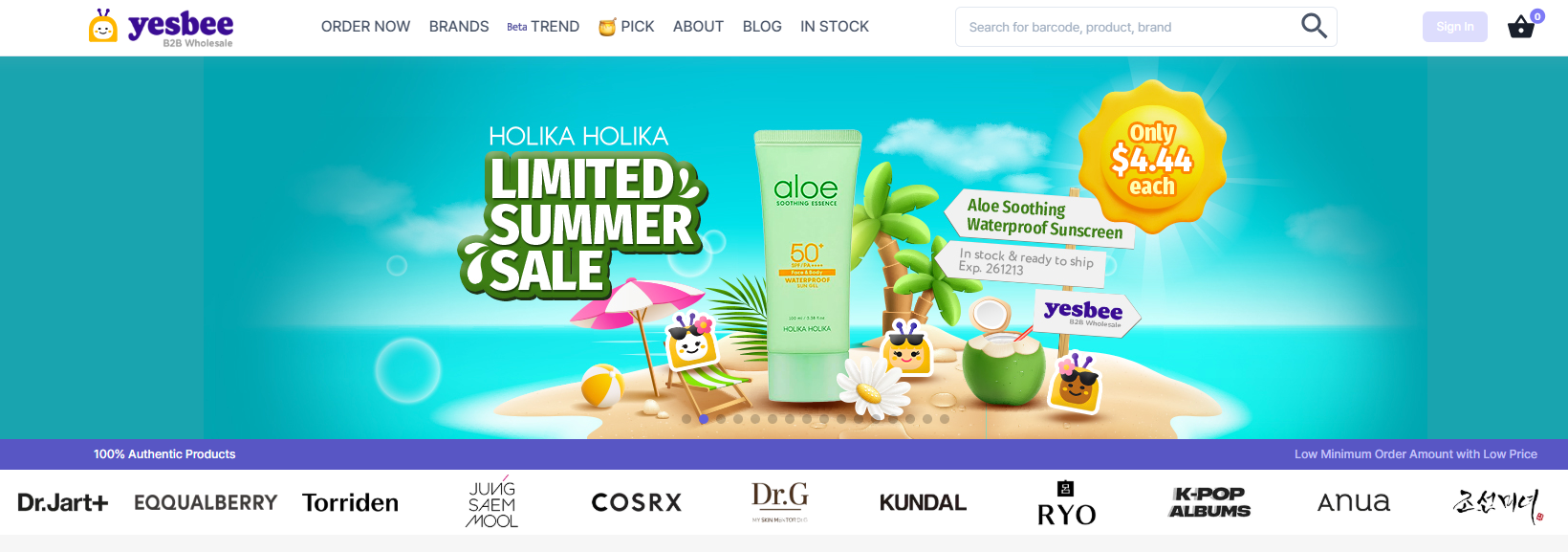
YESBEE is another B2B platform that connects you with authentic Korean suppliers and brands, with an emphasis on being easy for smaller businesses. They offer low minimum order quantities and worldwide shipping, making them accessible to startups. You can think of YESBEE as a facilitator – they gather various Korean brands (including skincare, cosmetics, maybe even some K-lifestyle items like beauty tools or accessories) in one place for you to order. The lower barrier to entry is a big plus: you don’t need to drop thousands of dollars to get started. This means you can try a wider variety of products in small amounts. YESBEE is positioned to help fill in the gaps of your catalog – for instance, if your primary supplier is out of stock on a trending item, YESBEE might have it via another source. It’s also useful for adding complementary Korean lifestyle items (maybe cute makeup pouches or hair accessories) alongside beauty, which can increase basket size. When working with YESBEE, ensure you understand how they handle direct-to-customer shipping if you plan to dropship directly. They might operate more like a wholesaler (shipping to you), so check if they offer any dropship programs. At the very least, you could order small batches to your location and then fulfill orders – given the small MOQs, this is feasible. YESBEE’s value is giving you flexibility and breadth with minimal risk.
10.SuperKos – Wholesale Specialist in Korean Cosmetics

SuperKos is a Korea-based cosmetics wholesaler known for competitive pricing and shipping rates for bulk orders. They carry a wide range of Korean skincare and makeup brands, from budget-friendly to luxury. SuperKos markets itself on offering low supply prices, which can translate to higher margins for you. It’s a go-to if you are starting to move volume and want to negotiate better deals. They have experience exporting to many countries (including the U.S. and Europe) and are recognized in the industrykoreaners.com. For a dropshipper, SuperKos could be used in a couple of ways: (a) As you start getting consistent sales on certain items, you might order a batch from SuperKos at a lower unit cost to increase your profit per sale. (b) Use their pricing to compare and ensure your other suppliers are giving you a good deal – essentially benchmark prices to protect your margins. When dealing with SuperKos, do check their minimum order requirements – being a wholesaler, they might expect you to order in larger quantities (dozens of units). Also, confirm their authentication process (they are reputable, but it’s wise to always ask for proof of authenticity/official distribution, which legit wholesalers will provide). And of course, factor in shipping; if you order a bulk to yourself, you’ll need to ship to customers. Many growing dropshippers eventually hybridize by keeping inventory of fast-sellers to ship domestically. SuperKos can support that phase. In summary, view SuperKos as an economical source for staples once your store scales – their pricing and bulk handling can significantly boost your margins on high-volume items. Just maintain a spreadsheet of cost, lead time, etc., from top suppliers (SuperKos vs others) so you can always choose the best option for each product.
These top 10 suppliers offer various ways to stock your store with sought-after Korean beauty products. You might use a combination of them: for instance, CJdropshipping for easy automated fulfillment of many items, plus a specialist like Q-Depot or UMMA for certain brands, and maybe Faire or YESBEE for the occasional niche product. The right mix depends on your strategy – whether you want to remain pure dropship (no inventory at all) or gradually add some wholesale purchasing for better margins. Either way, vet your suppliers carefully. Authenticity is paramount in cosmetics – working with reputable sources like the ones above helps ensure you’re delivering the real deal to your customers.
Authenticity Tip: Some of the suppliers above (especially those in Korea) pride themselves on selling only genuine products. Be wary of random online sellers offering unrealistically cheap prices on popular items – as a rule of thumb, if a supplier offers a famed K-beauty cream at a fraction of the normal wholesale price, it’s likely too good to be true and could indicate counterfeit goods. Always compare prices across a few sources. Legitimate distributors will have prices within a similar range and will be transparent about their sourcing. Don’t hesitate to ask suppliers for documentation or brand authorization proof; those who are above-board will gladly provide credentials, ingredient lists, and answer questions about origin.
Now that you know what to sell and where to get it, the next step is executing the business model effectively. In the following section, we’ll discuss how to source and dropship Korean beauty products profitably. This includes best practices for vetting suppliers, selecting winning products, navigating regulations, and ensuring a great customer experience that leads to repeat business.
How to Source & Dropship Korean Beauty Products Profitably
Succeeding in K-beauty dropshipping isn’t just about picking the right products – it’s also about operational smarts. To build a profitable business, you need to source efficiently, keep customers happy, and stay compliant with regulations. Here are key strategies and considerations for running your Korean beauty dropshipping venture profitably:
1. Vet Suppliers Thoroughly for Reliability and Authenticity
Your suppliers are the backbone of your business, so choose them carefully. Work only with sources that have a proven track record of providing authentic products – remember, skincare goes on people’s faces, and customers are rightly concerned about fakes. Watch out for red flags like unbelievably low prices on high-end brands (as mentioned, that often signals counterfeit or gray market goods). Ensure the supplier is transparent: they should be willing to share business info, ingredient details, or proof of authorization for the brands they carry.
2. Focus on Compliant, High-Quality Products
When sourcing K-beauty items for the U.S. or other markets, ensure those products meet local regulations. In the U.S., imported cosmetics must comply with the same FDA laws as domestic products. This means no banned ingredients, proper ingredient labeling in English, and safe formulation. Reputable Korean brands generally formulate to global standards, but be cautious with products that make drug-like claims (e.g. “whitening” creams that might contain ingredients like hydroquinone not allowed over-the-counter in the U.S.). Always check the ingredient list. The FDA can detain cosmetics that appear misbranded or unsafe, so it’s wise to avoid sourcing anything dubious.
3. Optimize Shipping and Fulfillment for Speed and Cost
One challenge in dropshipping is shipping time, especially if items are coming from Korea or Asia to the U.S. Customers these days expect reasonable delivery windows, even for international items. Partner with suppliers who offer fast shipping options or have local warehouses. For example, suppliers that use ePacket or similar expedited postal services can often deliver to the U.S. in about 1–2 weeks, whereas slower methods might take over a month. Some drop shipping companies in Korea have improved dispatch times, but research showed on average it might take 5–10 days just to ship out an order – that’s before the transit time. That delay can frustrate customers. To mitigate this, look for suppliers with streamlined logistics or stock some inventory stateside for your best-sellers. Services like CJdropshipping shine here if they have U.S. stock of a product (customers could get it in 3-7 days). You can even split test: initially dropship from Korea/China for free or low cost, and if an item is a hit, bulk ship some to a U.S. fulfillment center for faster repeat order fulfillment. Always be upfront with customers about shipping times at checkout or on product pages to set expectations. If possible, provide tracking on all orders. Many suppliers will supply a tracking number – integrate that so customers can follow their package. Shipping cost is another factor: include it in your pricing calculations. You might offer free shipping if margins allow, or a flat rate, but be sure to negotiate good shipping rates with suppliers when you can (higher volume often gives leverage). Ultimately, faster, reliable shipping leads to happier customers, positive reviews, and more repeat business – which all boost profitability.
4. Curate Product Selection and Test, Test, Test
To maximize profits, sell products that people actively want and are willing to pay for. This seems obvious, but it requires staying on top of trends and continuously testing new items. Use tools and research to identify what K-beauty products are trending globally – for example, monitor social media for viral skincare challenges, see what influencers are recommending, and use keyword tools to see what K-beauty terms people search for. If snail mucin is all the rage (as it has been), ensure you have a snail mucin item. If “propolis” is a buzzword for its acne-soothing properties, add a propolis serum. Start by adding a variety of product types (as we listed in the previous section), but pay attention to what actually sells in your store. It might turn out your audience is crazy about sheet masks but not so interested in makeup, or vice versa.
5. Pay Attention to Pricing and Margins
Profitability hinges on the gap between your selling price and all costs (product, shipping, fees). K-beauty products often have MAP or widely known retail prices, so be mindful not to price yourself out of the market. However, don’t undervalue your offerings either – you provide convenience and curation. Aim for a healthy margin that accounts for your ad spend if you have any. One challenge in dropshipping is that buying items individually can have higher cost per unit (versus importing bulk). This can lead to lower profit margins compared to traditional wholesale. To maintain profitability, look for ways to cut costs: negotiate with suppliers once you have volume (perhaps get a 5-10% discount at certain sales thresholds), group multiple customer orders together if shipping from the same source on the same day, or use a cashback credit card for purchasing to eke out extra savings.
6. Provide Excellent Customer Service and Education
In the beauty industry, customer experience is king. Aim to give your buyers a smooth, pleasant journey from browsing to unboxing. This includes clear product descriptions (ingredient lists, how to use, skin types suited for each product), and perhaps even blog content or mini-guides about Korean skincare routines. When customers know how to use the products correctly and see results, they’ll credit your store and come back for more. Ensure that any customer inquiries – “Is this product right for oily skin?”, “How do I layer these two serums?” – are answered promptly and helpfully. This not only can close the sale but also builds trust. Packaging and presentation are also part of the experience.
7. Keep Up with Trends and Engage the Community
Korean beauty is a dynamic niche with new trends popping up (e.g. glass skin, cream skin, skip-care, etc.). Stay educated by following K-beauty blogs, Reddit threads, YouTubers, and industry news. This will help you anticipate what products to source next and what content/keywords to incorporate in your marketing. Engaging with the K-beauty community can also drive profits – consider creating an Instagram or TikTok showcasing the products you sell, with demos or skincare tips. Dropshippers thrive when they tell stories, not just sell products.
In summary, profitability in K-beauty dropshipping comes from a combination of right product, right supplier, and right customer approach. Source smartly by partnering with the best suppliers (as we detailed) and keeping an eagle eye on authenticity and compliance. Streamline your operations to deliver quickly and handle issues proactively. And focus on educating and delighting your customers – an informed, happy customer is likely to become a repeat buyer and even a brand advocate. By implementing these practices, you not only drive more sales but do so in a way that is sustainable and scalable.
Let’s wrap up with some quick answers to frequently asked questions about Korean beauty dropshipping, to address any lingering curiosities or concerns you might have.
Faq for Korean Beauty
Q1: How long do Korean beauty products take to ship to U.S. customers?
A1: Shipping times vary by supplier and shipping method. If products ship from Korea or Asia via standard post, it often takes about 1–3 weeks to reach U.S. customers. Many dropshipping suppliers use ePacket or similar services that average 10–20 days. Some suppliers (like those with U.S. warehouses or Amazon fulfillment) can deliver in under a week. It’s best to provide a 2–4 week estimated window to be safe, unless you’re using a fast shipping option.
Q2: How can I ensure the K-beauty products I sell are authentic?
A2: The best way is to source from reputable suppliers. Stick to suppliers or wholesalers that work directly with Korean brands or authorized distributors (e.g. Miintrade or UMMA specialize in authentic K-beauty items). Avoid deals that seem too cheap for famous products – they often signal fakes. You can request certificates of authenticity or inquire about the supply chain.
Q3: Is it legal to dropship Korean cosmetics into the United States?
A3: Yes, it’s legal to sell imported Korean cosmetics in the U.S. as long as the products comply with FDA regulations. Imported cosmetics must meet the same safety and labeling requirements as U.S. products. Ensure the products do not contain any prohibited ingredients and that labels are in English with proper ingredient lists.
Conclusion
In conclusion, Korean beauty dropshipping presents an exciting opportunity to build a thriving e-commerce business at the intersection of a booming global trend and a low-risk fulfillment model. We’ve explored how K-beauty’s innovative products and devoted customer base create fertile ground for online sellers – from gentle cleansers and quirky serums to sheet masks and high-tech beauty tools, there’s a wealth of categories to tap into. With the right approach, you can offer popular and authentic K-beauty items that customers will love, all without worrying about inventory or upfront stock investments.
The key takeaways for success include partnering with reliable suppliers (like the top 10 we listed, with CJdropshipping and other reputable sources ensuring you get genuine products and reasonable shipping), carefully curating your product lineup based on demand, and maintaining a strong focus on customer experience. By sourcing smartly and adhering to best practices – from verifying authenticity to complying with regulations – you build trust with your audience. And by educating customers on skincare routines and delivering orders promptly, you encourage repeat business. As we’ve seen, the K-beauty niche is growing and full of loyal enthusiasts, so a store that consistently provides quality and value can carve out its own fan base.
Now is a fantastic time to dive into this booming market. The Korean beauty wave shows no sign of slowing, and with dropshipping tools and suppliers at your disposal, even a solo entrepreneur can compete and succeed. So, apply what you’ve learned: research trending products, connect with a trustworthy supplier, and optimize your online store for conversion. With dedication and smart execution, you can build a profitable brand bringing the best of Seoul’s skincare secrets to delighted customers around the world.
Encouragement: Every serum and sheet mask you sell isn’t just a product – it’s a little piece of self-care and confidence for your customer. By dropshipping K-beauty, you’re delivering the promise of glowing, healthy skin to people who value it. That’s a rewarding business to be in. So get started today: choose your niche, set up your store, and let the unique appeal of Korean beauty products power your entrepreneurial journey. Here’s to your success in riding the K-beauty wave and growing a beautiful business! 😊
